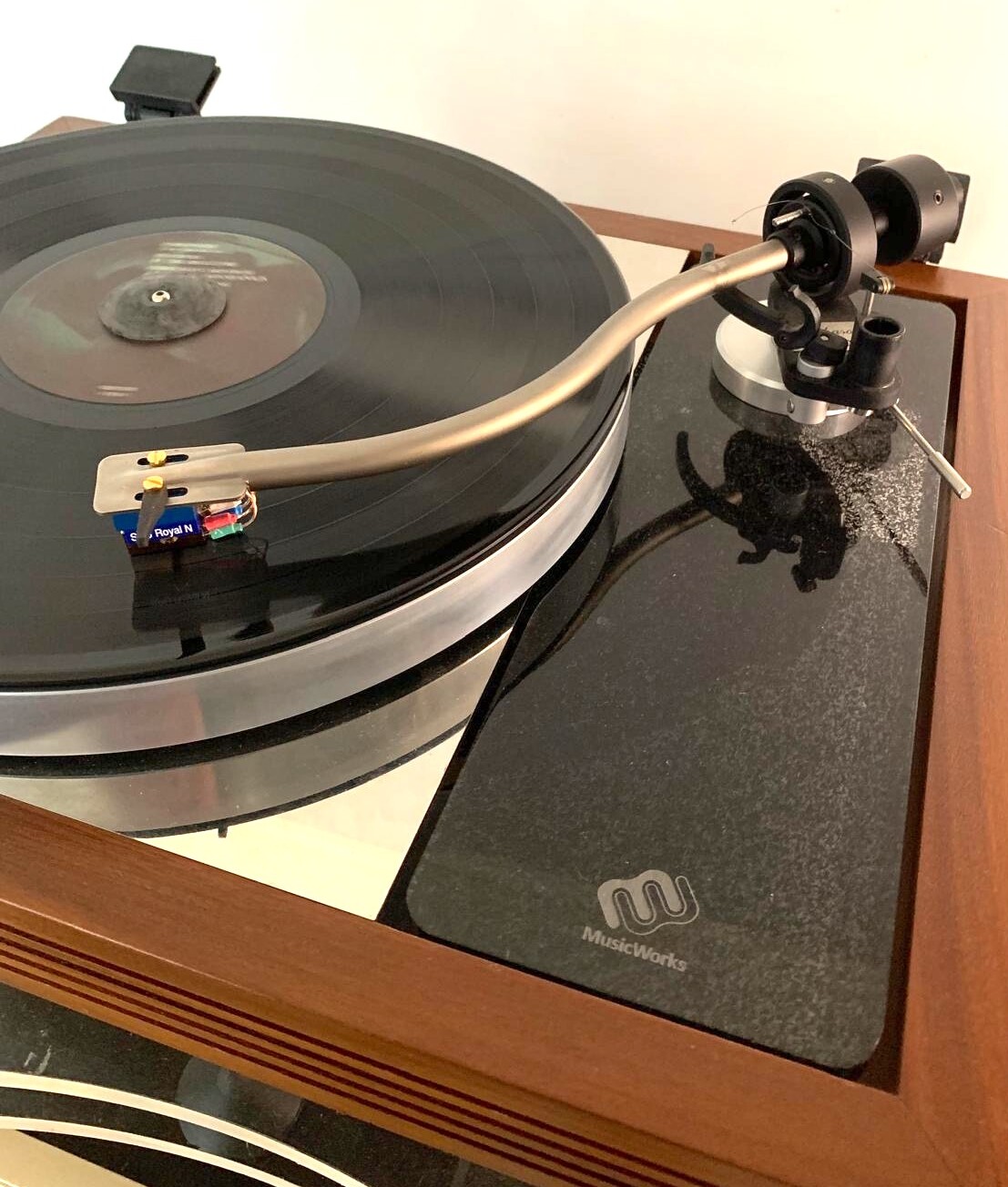
Now there’s been a third tweak, and this one isn’t AcouPlex. It’s a Stack Audio Serene record mat. I’m slightly mat sceptic, I find mostly that they move the problem around a bit more often than they fix it, but the Serene has been the one to break that cycle. This silicone design uses clever internal structures to focus the weight of the record onto the active, sprung construction elements in the mat. Unlike virtually all the others I’ve tried, it has a wide bandwidth, broad spectrum benefit and there’s no evident compromise to timing or dynamics. It’s doing similarly good things to the AcouPlex mods, controlling and mitigating internal vibrations within the vinyl, giving a more lucid, limpid presentation that lets all the component parts of the music work together without getting in each others’ way; the music gets to dance more, without the musicians treading on each others’ feet.
Interestingly, though, with the Serene mat in place, the 24g AcouPlex puck is overkill, the 11g puck is better, but best of all is the minimal, wafer thin, 4g version. The bigger puck now damps down a little of the air and freedom, to the detriment of the boogie factor. This flies in the face of my rule of thumb that the only thing better than some AcouPlex, is more AcouPlex, but it’s clearly telling me something about how effective the Serene mat is at damping the vinyl. I suspect the vestigial AcouPlex puck is mostly doing something clever to deal with energy emanating from the spindle in one form or another, rather than damping internal energy within the record itself. It’s certainly better than no puck at all, so whatever the cause, the two now work very effectively together.
No pain, all gain
I said at the outset of this little journey that I wanted any modifications to retain those things I’ve always liked about the original LP12, but address the things I felt could be improved. So, retaining that big, beefy, bouncy, puppyish enthusiasm for the music was always a prerequisite, while digging deeper into the recording to deliver the lucidity, the scale and the authority I hear in the higher-end decks from elsewhere. I’m not a fan of the most recent Linn iterations: I can’t escape the feeling they’re aiming to appeal to those who cut their musical teeth on CD and I think they’ve mislaid some of the ineffable qualities of vinyl in the attempt. For me, this was more about being true to those roots, but exploring the art of the possible and getting closer to the limits of the basic engineering design.
It turns out that those limits are rather higher than I’d expected. I haven’t yet done any direct head-to-head comparisons, but I’d now feel confident putting this slightly careworn old LP12 up against anything from another manufacturer up to, and possibly beyond £20k. I’ve heard a similarly-modded LP12 comprehensively outpoint a >£10k flagship model from another well-regarded UK manufacturer, one which I previously held as a benchmark at its price. And, if anything, those Linn qualities I was keen to retain have just come to the fore. I’m constantly reminded of everything I loved in records I’ve had for decades, but in a very real sense I’m also hearing them for the very first time. The music is fresh, vibrant, vivid and expressive; familiar but also new because of the unexpected depths I’m now plumbing. There’s subtlety, complexity, timing, detail and exquisite levels of musicianship I hardly suspected, in places I wouldn’t have even looked for it. And I didn’t have to look for it: the turntable just showed it to me.
Was it worth it?
As the soccer pundits are fond of saying, this was a game of two halves. The top plate modifications, and the AcouPlex sub-chassis and arm-board. They’ll each work in isolation, but the two together produce something greater than the sum of the parts. It’s as though the top plate mods lay the groundwork for the AcouPlex to do its thing to its fullest potential. I’m sure the AcouPlex subchassis and armboard could transform an otherwise stock LP12, but I’m equally sure it wouldn’t give the level of results I’ve heard here. I spoke above about the difference between structure and posture; in truth, I think the attribution of structure to the top plate, and posture to the AcouPlex is too simplistic: they both contribute something to each of those things. Wherever I’ve experienced AcouPlex in action, the result has been about focus and concentration – think ristretto vs espresso perhaps – fundamentally the same product but the more concentrated version hits harder. And you’re not going to get that degree of focus and lucidity if the structural elements are awry, so AcouPlex is clearly playing an important role in that aspect too. But as RG observes in his review of the ReFract panels, the benefits are arguably more profound in the CH Precision kit whose structural design positively enables this interaction. I think there’s a very similar, symbiotic interaction here between the top plate and the subchassis/armboard elements.

